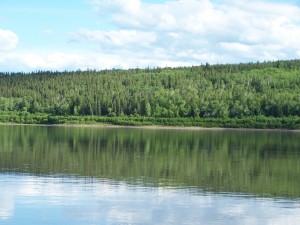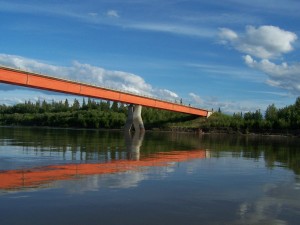Have you ever dreamed of going on an expedition? Do stories of men who ski to the north pole or climb Mount Everest catch your imagination? Stories of explorers and far away lands have always sparked something within us!

Have you ever thought of retracing Sir Alexander Mackenzie’s historic voyageur route? In 1789, he led a group of voyageurs and natives to look for a river leading to the Pacific; instead, they followed a massive river flowing north to the arctic ocean, later named the Mackenzie River after him.
I really cannot imagine paddling down a river, truly not knowing where it leads. When I am on the water, I often refer to my maps to see what islands or river confluences are coming up, and I certainly know where I’ll end up in 2-3 days’ time. Not so with the early explorers; when Mackenzie left the Great Slave Lake, he only knew the river they were on flowed west, for the time being. When it curved North and didn’t resume its westerly flow, he realized it wouldn’t lead to the Pacific, but he didn’t know where it would lead. It was only when they noticed tidal fluctuations in the water level near their camp that they knew they were near the Arctic Ocean. After this journey, he returned to England to improve his skills with the navigational instruments of the day, to obtain better latitude and longitude measurements.
In 1792, he tried again, this time following the Peace River upstream to Fort Fork, located near the present-day town of Peace River, to spend the winter. In spring of 1793, he and his crew of 9 made the push upstream again, eventually over the continental divide, downstream and overland to an inlet of the Pacific Ocean.
There’s no question that paddling the Peace River is a chance to retrace history… to follow in the footsteps and paddle-strokes of explorers, fur traders, aboriginal people, entrepreneurs and men of vision. It’s length is epic; it can take a month to paddle the full length, although Mackenzie and his contemporaries paddled it much faster than that. They made their entire return trip in 30 days, from the Pacific to Fort Chipewyan, which included 450 km (280 miles) of hiking. Once they reached the end of that very long portage, they covered 1380 km (860 miles) of water in 24 days — an average of 58 km/day (36 miles/day), including portages!

We offer two packages with much more relaxed pace — 8-day and 10-day paddling packages for one 430-km section (267 miles), from the town of Peace River to one of Alberta’s first communities, Fort Vermilion. Check this page for details on this unguided trip. (Photo at left is the highway bridge near Fort Vermilion.)
If you are interested in paddling this historic waterway, with or without our paddling package, we’d be happy to help in any way, either by supplying equipment, sharing local knowledge, or by picking you up at the end. When you’re on the water, it’s very reassuring to know that someone will be waving on the shore when you reach your destination!